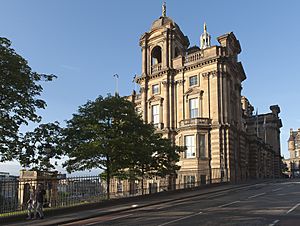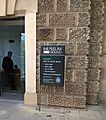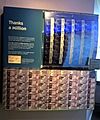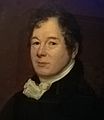Museum on the Mound facts for kids

The museum is located in the Bank of Scotland head office, Edinburgh
|
|
| Lua error in Module:Location_map at line 420: attempt to index field 'wikibase' (a nil value). | |
| Location | The Mound, Edinburgh |
|---|---|
| Type | Numismatics museum |
| Collections | Banknotes of Scotland, Scottish coinage, economics |
| Visitors | 50,000 |
| Owner | Bank of Scotland |
| Public transit access | |
The Museum on the Mound is a cool museum in Edinburgh, Scotland. It's all about money, coins, and how the economy works. You can find it inside the Bank of Scotland Head Office building, which is on a famous street called The Mound. Lots of people visit every year – more than 50,000!
Contents
History of the Museum
The Bank of Scotland Head Office building is a really big and old building. It has a large dome on top and sits at the very top of The Mound. The building was first designed way back in the early 1800s. Because it's on a steep hill, it has a huge basement. Part of this basement is where the Museum on the Mound is located today.
Before 2006, there was a small museum display in just one room in the basement. You could only visit if you had an appointment. This small museum first opened in 1986. The bigger and better Museum on the Mound, as we know it today, officially opened its doors in September 2006.
In 2017, there was news that the museum might close. But many people loved the museum and spoke up! Because of this public support, the decision was changed, and the museum stayed open.
What You Can See: Museum Exhibits
The museum has a permanent collection that tells the story of the Bank of Scotland. You can learn about its history since it started in 1695. There are also paintings and models of the Head Office building itself. You can explore the history of banking and building societies in Britain.
Money Through Time
A big part of the museum is about the history of numismatics. This is the study or collection of coins, paper money, and medals. You can see old items that people used to trade before money existed. There are also ancient tokens from as far back as the 1100s!
The museum shows off Scottish coinage and different kinds of paper money. The Bank of Scotland has always been allowed to print its own banknotes. Because of this, the museum has many historic Scottish banknotes in its collection. You can even see a special Bank of England £1 million note. This huge note shows how banks use very large amounts of money to support the banknotes they give out.
Images for kids
-
George Pinckard founder and first chairman of Clerical Medical
See also





